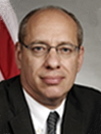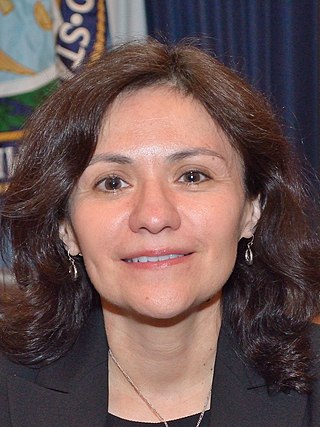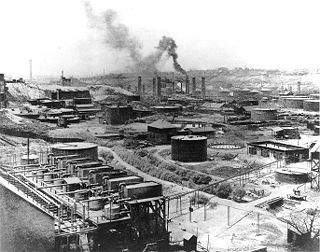Related Research Articles

The Federal Trade Commission Act of 1914 is a United States federal law which established the Federal Trade Commission. The Act was signed into law by US President Woodrow Wilson in 1914 and outlaws unfair methods of competition and unfair acts or practices that affect commerce.

The Communications Act of 1934 is a United States federal law signed by President Franklin D. Roosevelt on June 19, 1934, and codified as Chapter 5 of Title 47 of the United States Code, 47 U.S.C. § 151 et seq. The act replaced the Federal Radio Commission with the Federal Communications Commission (FCC). It also transferred regulation of interstate telephone services from the Interstate Commerce Commission to the FCC.

In the United States, antitrust law is a collection of mostly federal laws that govern the conduct and organization of businesses in order to promote economic competition and prevent unjustified monopolies. The three main U.S. antitrust statutes are the Sherman Act of 1890, the Clayton Act of 1914, and the Federal Trade Commission Act of 1914. These acts serve three major functions. First, Section 1 of the Sherman Act prohibits price fixing and the operation of cartels, and prohibits other collusive practices that unreasonably restrain trade. Second, Section 7 of the Clayton Act restricts the mergers and acquisitions of organizations that may substantially lessen competition or tend to create a monopoly. Third, Section 2 of the Sherman Act prohibits monopolization.

The Federal Trade Commission (FTC) is an independent agency of the United States government whose principal mission is the enforcement of civil (non-criminal) antitrust law and the promotion of consumer protection. The FTC shares jurisdiction over federal civil antitrust law enforcement with the Department of Justice Antitrust Division. The agency is headquartered in the Federal Trade Commission Building in Washington, DC.
In the United States government, independent agencies are agencies that exist outside the federal executive departments and the Executive Office of the President. In a narrower sense, the term refers only to those independent agencies that, while considered part of the executive branch, have regulatory or rulemaking authority and are insulated from presidential control, usually because the president's power to dismiss the agency head or a member is limited.

The National Electric Light Association (NELA) was a national United States trade association that included the operators of electric central power generation stations, electrical supply companies, electrical engineers, scientists, educational institutions and interested individuals. Founded in 1885 by George S. Bowen, Franklin S. Terry and Charles A. Brown, it represented the interests of private companies involved in the fledgling electric power industry that included companies like General Electric, Westinghouse and most of the country's electric companies. The NELA played a dominant role in promoting the interests and expansion of the U.S. commercial electric industry. The association's conventions became a major clearinghouse for technical papers covering the entire field of electricity and its development, with a special focus on the components needed for centralized power stations or power plants. In 1895 the association sponsored a conference that led to the issue of the first edition of the U.S. National Electrical Code. Its rapid growth mirrored the development of electricity in the U.S. that included regional and statewide affiliations across the country and Canada. It was the forerunner of the Edison Electric Institute. Its highly aggressive battle against municipal ownership of electric production led to extensive federal hearings between 1928 and 1935 that led to its demise. Its logo is an early depiction of Ohm's law which is "C equals E divided by R," or "the current strength in any circuit is equal to the electromotive force divided by the resistance," or the basic law of electricity. It was established in 1827 by Dr. G. S. Ohm.

The Public Utility Regulatory Policies Act is a United States Act passed as part of the National Energy Act. It was meant to promote energy conservation and promote greater use of domestic energy and renewable energy. The law was created in response to the 1973 energy crisis, and one year in advance of a second energy crisis.

The Public Utility Holding Company Act of 1935 (PUHCA), also known as the Wheeler-Rayburn Act, was a US federal law giving the Securities and Exchange Commission authority to regulate, license, and break up electric utility holding companies. It limited holding company operations to a single state, thus subjecting them to effective state regulation. It also broke up any holding companies with more than two tiers, forcing divestitures so that each became a single integrated system serving a limited geographic area. Another purpose of the PUHCA was to keep utility holding companies engaged in regulated businesses from also engaging in unregulated businesses. The act was based on the conclusions and recommendations of the 1928-35 Federal Trade Commission investigation of the electric industry. On March 12, 1935, President Franklin D. Roosevelt released a report he commissioned by the National Power Policy Committee. This report became the template for the PUHCA. The political battle over its passage was one of the bitterest of the New Deal, and was followed by eleven years of legal appeals by holding companies led by the Electric Bond and Share Company, which finally completed its breakup in 1961.
Michael Pertschuk was an American attorney and advocate for consumer protection and public health. He served as a member of the Federal Trade Commission (FTC) from 1977 to 1984, and served as FTC Chair from 1977 to 1981. During his tenure, Pertschuk worked to strengthen the FTC's consumer protection powers.

The Packers and Stockyards Act of 1921 regulates meatpacking, livestock dealers, market agencies, live poultry dealers, and swine contractors to prohibit unfair or deceptive practices, giving undue preferences, apportioning supply, manipulating prices, or creating a monopoly. It was enacted following the release in 1919 of the Report of the Federal Trade Commission on the meatpacking industry.

Christine A. Varney is an American antitrust attorney who served as the U.S. assistant attorney general of the Antitrust Division for the Obama administration and as a Federal Trade commissioner in the Clinton administration. Since August 2011, Varney has been a partner of the New York law firm Cravath, Swaine & Moore, where she chairs the antitrust department.

Jonathan David Leibowitz is an American attorney who served under President Barack Obama as Chair of the Federal Trade Commission (FTC) from 2009 to 2013. Leibowitz was appointed to the commission in 2004, and resigned in 2013. During Leibowitz's tenure, the FTC brought privacy cases against Google, Facebook and others for violating consumer privacy, as well as enforcement against "pay-for-delay" deals in which pharmaceutical companies paid competitors to stay out of the market. Prior to joining the FTC, Leibowitz was Vice President for Congressional Affairs from 2000 to 2004 of the MPAA.

The Federal Trade Commission Building, known historically as the Apex Building, is a federal building which serves as the headquarters of the Federal Trade Commission. Completed in 1938, the building was designated by Congress as a contributing structure to the Pennsylvania Avenue National Historic Site in 1966, and it was subsequently listed in the National Register of Historic Places.

Edith Ramirez is an American attorney who served as a member of the Federal Trade Commission from 2010 to 2017. Ramirez served as FTC Chair from 2013 to 2017, the first person from an ethnic minority to lead the agency.

Julie Simone Brill is an American lawyer who is Chief Privacy Officer and Corporate Vice President for Global Privacy, Safety and Regulatory Affairs at Microsoft. Prior to her role at Microsoft, Brill was nominated by President Barack Obama on November 16, 2009, and confirmed unanimously by the US Senate to serve as Commissioner of the US Federal Trade Commission on March 3, 2010. Brill was a Commissioner of the Federal Trade Commission (FTC) from 2010 to 2016.

The Natural Gas Act of 1938 was the first occurrence of the United States federal government regulating the natural gas industry. It was focused on regulating the rates charged by interstate natural gas transmission companies. In the years prior to the passage of the Act, concern arose about the monopolistic tendencies of the transmission companies and the fact that they were charging higher than competitive prices. The passage of the Act gave the Federal Power Commission (FPC) control over the regulation of interstate natural gas sales. Later on, the FPC was dissolved and became the Federal Energy Regulatory Commission (FERC) pursuant to a different act. FERC continues to regulate the natural gas industry to this day.

The Inland Waterways Commission was a United States federal agency, created by Congress in March 1907 at the request of President Theodore Roosevelt, to investigate the transportation crisis that recently had affected the nation's ability to move its produce and industrial production efficiently. The immediate crisis centered on insufficient railroad capacity developed by the private sector, and competing but neglected inland shipping, the navigation of which had been deemed under federal purview since 1824. The temporary commission lasted until the end of Roosevelt's presidency, but his conservationist progressive interest was focused more than on transportation alone. The president wanted water projects to be considered for their multiple uses and in relation to other natural resources and asked for a comprehensive plan for the improvement and control of the river systems of the United States.

The history of United States antitrust law is generally taken to begin with the Sherman Antitrust Act 1890, although some form of policy to regulate competition in the market economy has existed throughout the common law's history. Although "trust" had a technical legal meaning, the word was commonly used to denote big business, especially a large, growing manufacturing conglomerate of the sort that suddenly emerged in great numbers in the 1880s and 1890s. The Interstate Commerce Act of 1887 began a shift towards federal rather than state regulation of big business. It was followed by the Sherman Antitrust Act of 1890, the Clayton Antitrust Act and the Federal Trade Commission Act of 1914, the Robinson-Patman Act of 1936, and the Celler-Kefauver Act of 1950.

The Electric Bond and Share Company (Ebasco) was a United States electric utility holding company organized by General Electric. It was forced to divest its holding companies and reorganize due to the passage of the Public Utility Holding Company Act of 1935. Following the passage of the Act, the U.S. Securities and Exchange Commission (SEC) selected the largest of the U.S. holding companies, Ebasco to be the test case of the law before the U.S. Supreme Court. The court case known as Securities and Exchange Commission v. Electric Bond and Share company was settled in favor of the SEC on March 28, 1938. It took twenty-five years of legal action by the SEC to break up Ebasco and the other major U.S. electric holding companies until they conformed with the 1935 act. It was allowed to retain control of its foreign electric power holding company known as the American & Foreign Power Company (A&FP). After its reorganization, it became an investment company, but soon turned into a major designer and engineer of both fossil fuel and nuclear power electric generation facilities. Its involvement in the 1983 financial collapse of the Washington Public Power Supply System's five nuclear reactors led to Ebasco's demise because of the suspension of nuclear power orders and lawsuits that included numerous asbestos claims. The U.S. nuclear industry stopped all construction of new facilities following the 1979 nuclear meltdown at Three Mile Island, going into decline because of radiation safety concerns and major construction cost overruns.
Electric Bond Share Company v. Securities & Exchange Commission, 303 U.S. 419 (1938), was a United States Supreme Court case in which the court upheld the constitutionality of the Public Utility Holding Company Act of 1935.
References
- ↑ Herbert Knox Smith, report on Water-Power Development in the United States (1912). Available at Report of the commissioner of corporations on water-power development in the United States
- ↑ James C. Bonbright, Gardiner C. Means, The Holding Company: Its Public Significance and Its Regulation, New York (1932) McGraw-Hill. ISBN 9780678005026
- ↑ Joshua Specht (2019). Red Meat Republic: A Hoof-to-Table History of How Beef Changed America (PDF). Princeton University Press. p. 9. ISBN 978-0691182315.